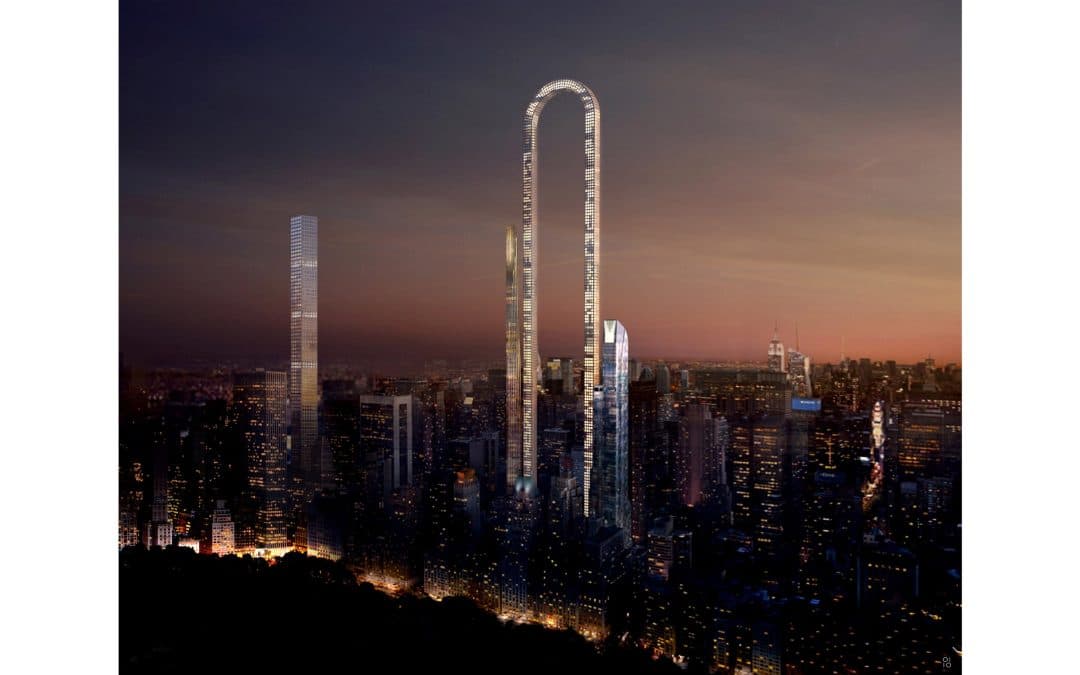Alternatives to Chicago property taxes, a mega-million condo sale loss and a proposal to bend the Manhattan skyline. From the wild and wooly world of real estate, here are our Hits and Misses for the week of Nov. 11-15.
Hit: Let’s Not Go, Brandon. Praise goes this week to the members of Chicago City Council who are working to steer Mayor Brandon Johnson away from his proposed $300 million property tax with new ideas that would help shrink the city’s $1 billion budget deficit. At least 10 potential revenue options are being floated – these include a new $9.50-a-month garbage collection fee, an amusement tax from 9% to 14% on streaming services, an increase in the personal property lease tax on cloud computing from 9% to 10.25%, and higher taxes on cigarettes, parking, bottled water, gasoline and liquor. Chicago voters already rejected a so-called “mansion tax” idea from the mayor earlier in the year – thank goodness the City Council members are listening to residents in saying no to another property tax proposal.
Miss: A Supersized Ouch. Chicago is also the location where billionaire hedge fund executive Ken Griffin made one of his rare financial debacles. According to the Wall Street Journal, the Citadel founder sold the top two floors of the condo tower No. 9 Walton for $19 million – he acquired this property in 2017 for more than $34 million, which means his just-completed sale left him with a 44% loss. This comes two years after Griffin relocated Citadel’s headquarters from Chicago to Miami, due to what he publicly declared to be a rise in the city’s criminal violence. Well, at least Griffin dodged whatever property tax bullets the current mayor wanted to fire his way.
Miss: How to Behave, NAR-Style. This week, the National Association of Realtors adopted a set of objectives designed to improve the organization’s culture. According to NAR, this initiative “is just the latest action the organization has taken to set expectations around conduct, foster professionalism and promote accountability among members, volunteers, executives and staff.” Among the objectives is requiring NAR leadership to “complete an anti-retaliation training annually that clearly defines NAR’s anti-retaliation policy,” along with the organization establishing “culture and accountability bodies for NAR volunteers and staff” and “a unified set of values for NAR volunteers and staff.” In other words, guardrails for behaving like a responsible and intelligent professional. You can read the full line-up of objectives here – but, seriously, is any of this going to resolve the problems that NAR brought on itself and its profession?
Hit: A Potential Home Run? Houston’s Astrodome is one of the nation’s most historically significant structures – billed as the “Eighth Wonder of the World” when it opened in 1965, it was the first-ever domed sports stadium. Unfortunately, this landmark property has been closed for the last 15 years, and multiple proposals to reanimate it came to naught. This week, the nonprofit Astrodome Conservancy offered the intriguing “Vision: Astrodome” concept for a flexible event arena at the center that would be surrounded by new buildings for restaurants, shops, offices, and hotel space. The budget for this concept is $1 billion, with $250 million coming from public funding – and while the latter might be a deal-killer for some people, at least some effort is being made to start a long overdue new chapter in the life of this amazing property.
Miss: How Not to Fix a Problem. The government of Prime Minister Justin Trudeau created a socioeconomic mess by opening Canada to a massive flood of new immigrants without having the necessary housing in place to accommodate them – and, even worse, it never provided enough affordable housing for Canadian citizens. The Canada Mortgage and Housing Corporation has estimated that nearly 6 million additional homes must be built by 2030 to restore housing affordability. However, there is a construction labor shortage in Canada, so this week the government allocated $9 million to bring 1,500 internationally trained construction professionals into the country to build the homes the country desperately needs. That’s right, they’re importing people to fix the problem of importing people. Not surprisingly, many Canadians are wondering if it is time to consider bringing in a leader who has a better comprehension of how housing and immigration policies should work.
Miss: Hurry Up, Elon and Vivek! This week, the U.S. Department of Housing and Urban Development’s (HUD) announced a $231,623 transaction to install a 79.87 kW grid-tied solar system at an affordable housing development seniors in Calais, Maine. The development is home to 26 seniors who receive rental assistance under HUD’s Section 202 Housing for Low-Income Elderly program. While no one is begrudging these elderly residents from having an energy efficient home, one must question why HUD has become so fixated on green energy at a time when the quantity of affordable housing is so painfully lacking – where are the department’s priorities? Also, who determined that solar energy is the best solution available for this particular project? Thank goodness for Elon Musk, Vivek Ramaswamy and their Department of Government Efficiency – HUD is more than worthy of this new initiative’s attention.
Hit: A U-Turn in Manhattan. Innovative contemporary architecture rarely generates headlines anymore, but the architectural studio Oiio called attention to itself with a fascinating proposal for a Manhattan skyscraper dubbed “The Big Bend.” Rather than construct the traditional vertical shaft up to the clouds, the Oiio artists envisioned a 4,000-foot structure shaped like a large upside-down U – this creates a massive arch connecting the property’s two towers. Even better, the elevators in the property would be able to travel the curved horizontal paths within the arch. Designer Ioannis Oikonomou told the British newspaper Metro that there are “many different ways that can make a building stand out, but in order to do so the building has to literally stand out.” However, Architectural Digest covered the concept with the headline “This Skyscraper Could Ruin New York’s Skyline.” The photo at the top of this story is the rendering of The Big Bend – what’s your opinion of this concept? Please share your thoughts in the Comments section below.
Phil Hall is editor of Weekly Real Estate News. He can be reached at [email protected].













I don’t hate the Big Bend at all.
Hmmm, anti-Trudeau, pro Vivek and Elon. I wonder where your politics bend.
Amazing… A journalist who MAY not be a full on leftist. I can see why you’re questioning his politics, MyGolly. It IS a little unbelievable.